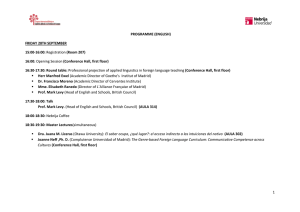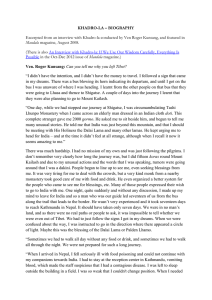ST. JOHN OF THE CROSS John of the Cross was born Juan de
Anuncio
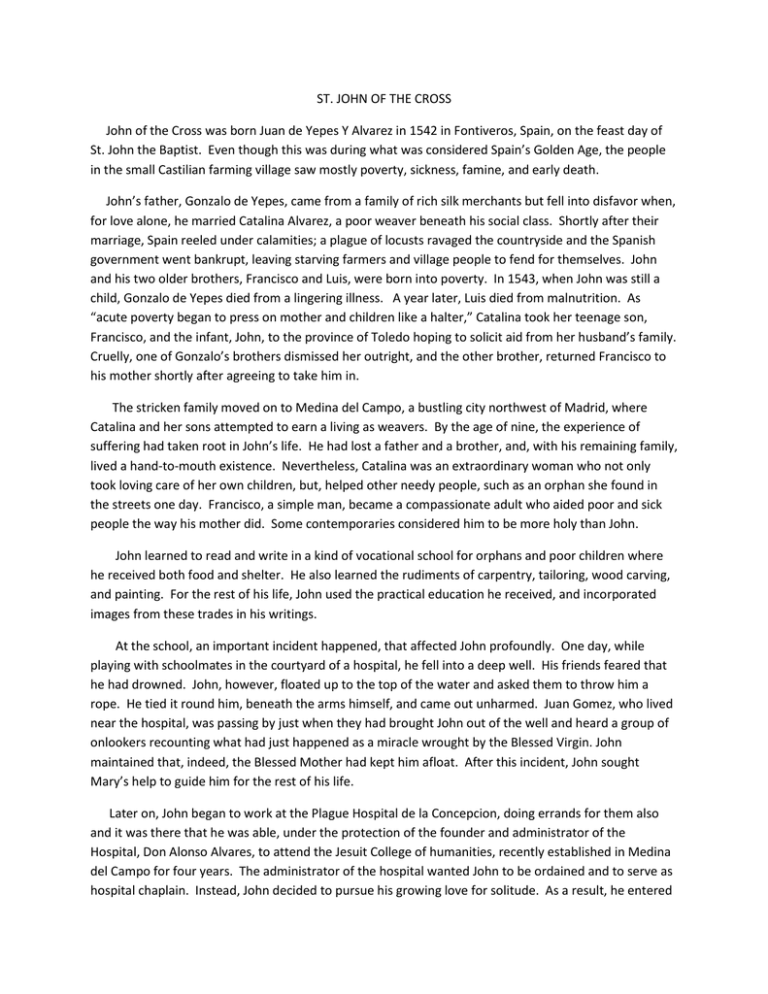
ST. JOHN OF THE CROSS John of the Cross was born Juan de Yepes Y Alvarez in 1542 in Fontiveros, Spain, on the feast day of St. John the Baptist. Even though this was during what was considered Spain’s Golden Age, the people in the small Castilian farming village saw mostly poverty, sickness, famine, and early death. John’s father, Gonzalo de Yepes, came from a family of rich silk merchants but fell into disfavor when, for love alone, he married Catalina Alvarez, a poor weaver beneath his social class. Shortly after their marriage, Spain reeled under calamities; a plague of locusts ravaged the countryside and the Spanish government went bankrupt, leaving starving farmers and village people to fend for themselves. John and his two older brothers, Francisco and Luis, were born into poverty. In 1543, when John was still a child, Gonzalo de Yepes died from a lingering illness. A year later, Luis died from malnutrition. As “acute poverty began to press on mother and children like a halter,” Catalina took her teenage son, Francisco, and the infant, John, to the province of Toledo hoping to solicit aid from her husband’s family. Cruelly, one of Gonzalo’s brothers dismissed her outright, and the other brother, returned Francisco to his mother shortly after agreeing to take him in. The stricken family moved on to Medina del Campo, a bustling city northwest of Madrid, where Catalina and her sons attempted to earn a living as weavers. By the age of nine, the experience of suffering had taken root in John’s life. He had lost a father and a brother, and, with his remaining family, lived a hand-to-mouth existence. Nevertheless, Catalina was an extraordinary woman who not only took loving care of her own children, but, helped other needy people, such as an orphan she found in the streets one day. Francisco, a simple man, became a compassionate adult who aided poor and sick people the way his mother did. Some contemporaries considered him to be more holy than John. John learned to read and write in a kind of vocational school for orphans and poor children where he received both food and shelter. He also learned the rudiments of carpentry, tailoring, wood carving, and painting. For the rest of his life, John used the practical education he received, and incorporated images from these trades in his writings. At the school, an important incident happened, that affected John profoundly. One day, while playing with schoolmates in the courtyard of a hospital, he fell into a deep well. His friends feared that he had drowned. John, however, floated up to the top of the water and asked them to throw him a rope. He tied it round him, beneath the arms himself, and came out unharmed. Juan Gomez, who lived near the hospital, was passing by just when they had brought John out of the well and heard a group of onlookers recounting what had just happened as a miracle wrought by the Blessed Virgin. John maintained that, indeed, the Blessed Mother had kept him afloat. After this incident, John sought Mary’s help to guide him for the rest of his life. Later on, John began to work at the Plague Hospital de la Concepcion, doing errands for them also and it was there that he was able, under the protection of the founder and administrator of the Hospital, Don Alonso Alvares, to attend the Jesuit College of humanities, recently established in Medina del Campo for four years. The administrator of the hospital wanted John to be ordained and to serve as hospital chaplain. Instead, John decided to pursue his growing love for solitude. As a result, he entered the Calced Carmelite order originated by a group of hermits dedicated to Mary and to contemplative life. John took the religious name, Fray Juan de Santo Matia. The Calced Carmelites sent John to study at the University of Salamanca, one of the finest European universities of the period. He encountered a stimulating intellectual environment and several outstanding teachers. John soon distinguished himself with his knowledge of the Scriptures, patristic (the study of the writings of the church fathers), his superiors appointed John prefect of studies at the Carmelite College of San Andres. He made his Carmelite profession in 1564 and lived there for five years as a Carmelite Friar. In July 1567, he was ordained to the priesthood in Salamanca. John returned to Medina del Campo in August, giving his mother the great consolation of hearing him sing his first Holy Mass in their home town. It was there on that visit to his mother, that he met Teresa of Jesus. He was disappointed with the type of life the Carmelites were living and was thinking of joining the Carthusians, seeking a life of deeper solitude and prayer. Teresa of Jesus told him to be patient for one more year and go finish his studies in Salamanca. She promised him that by that time she would be ready for the first foundation of the Reform for the Fathers. She fulfilled her promise. The first foundation would be in Duruelo. Teresa of Jesus introduced Fray John to this new way of Carmelite life by allowing him to be their Chaplain and confessor to her new foundation in Valladolid. Through Teresa was twenty-seven years older than John, they shared wisdom and affection. Speaking of Fray John to her nuns, Teresa once said, “I am bringing you, ladies, a saint as your confessor.” While John considered Teresa to be his mentor, she recognized him as her spiritual equal. With her great sense of humor, Teresa could also enjoy the earnest John. When the diminutive John (he stood only four feet eleven inches) and Fray Antonio, an older Carmelite, committed themselves to setting up the newly reformed house, Teresa of Jesus delightedly quipped, “Now I have a friar and a half to begin the Reform with.” Such was their friendship that John kept a portrait of Teresa with him and exchanged poetry with her by letter. They sorely missed each other when separated for too long. John also changed his name to Juan de la Cruz, or John of the Cross. In 1570, John moved to Pastrana, where another reformed house had opened. Growth continued, and the superior put John in charge of a house of studies at the fledgling university in Alcala de Herares. A year later, at Teresa’s request, John was assigned to be confessor and spiritual director to the Convent of the Incarnation in Avila, Spain. For five years, John lived in a hut at the edge of the property. The reform that was originally supported by some leaders in the Calced Carmelite Order was now condemned by some. John of the Cross was arrested on December 2, 1577 and led off to Toledo. There, the unreformed Carmelites declared him to be a rebel, and threw him into a small cell in their monastery. Here Fray John was brought on a winter’s day. All he had was his breviary. Soon he would feel the effects of the terrible cold of Toledo, and would find the skin coming off his toes from frostbite. Here he was to spend nine months, solitary, hungry, in an atmosphere with an unpleasant smell, wasting away, with no other light than that which came in the wall of the tiny cell. He was flogged, starved, and told to forsake his commitment to the primitive rule. These nine months of suffering became John’s dark night of the soul. In the midst of his stark emptiness, images flowed from the depths of his soul, which later poured out in his poetic masterpieces, “The Dark Night of the Soul” and “The Spiritual Canticle.” Meanwhile, Teresa wrote the Spanish king, “I am terrible distressed to see our friars in such hands. As for this friar, John of the Cross, who is such a true servant of God, he is so weak, after all that he has suffered, that I fear for his life.” One night, through his own watchfulness, perhaps with the connivance of sympathetic friar left to guard him, some planning, and unusual circumstances, John escaped and hid with the Discalced nuns in Toledo. Even though John’s enemies kept guard on the monastery, the nuns saw that John received the medic al help he needed and spirited him away from his captors. After a long and complicated process, the Discalced became an independent community (though not a separate order), and allowed to govern themselves. John went, as Superior, to the monastery at El Calvario in the region of Andalusia, the isolation would provide John with some protection from his enemies. He stayed there for one year; then went to Granada as Prior of the monastery. His six years in Granada were perhaps the richest time in John’s life. There he completed “The Spiritual Canticle” wrote “The Living Flame of Love and finished commentaries on “The Ascent of Mount Carmel” and “The Dark Night of the Soul.” In August, 1588 John attends the chapter of the Reform in Madrid, and is elected first definitor. Later that month, John takes up his new role as prior of Segovia, the house that would become the headquarters for the government of the Reform. John acts as deputy for Fr. Doria, during the latter’s absences. On June 1, 1591, the eve of Pentecost, the general chapter opens in Madrid. John is left without office and sent to La Penuela to prepare for assignment to Mexico. He arrives at La Penuela in August. Within a few weeks, John falls victim to severe fever. On September 22 he leaves La Penuela for Ubeda. John of the Cross dies at Ubeda on December 14, 1591. Pope Clement X beatified John of the Cross on January 25, 1675 Pope Benedict XIII canonized him on December 27, 1726. Pope Pius XI declared John of the Cross a Doctor of the Church Universal on August 24, 1926 In 1952, The Spanish National Ministry for Education named him “Patron Saint of Spanish Poets”
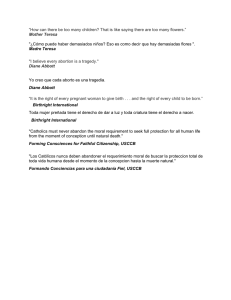
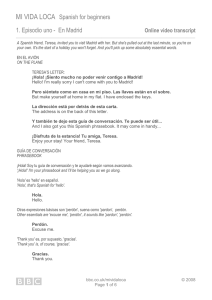
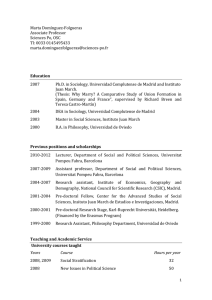
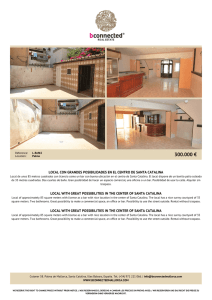
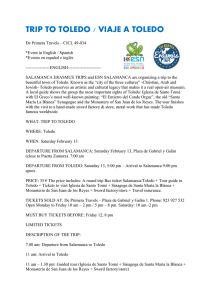
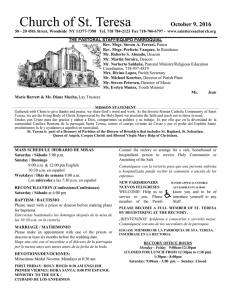
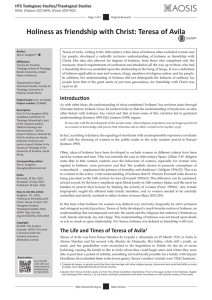

![The [Subversive] Mixquiahuala Letters: I An Antidote for Self](http://s2.studylib.es/store/data/006528897_1-f74136ba1ff5f7d4b744e0382830339a-300x300.png)
